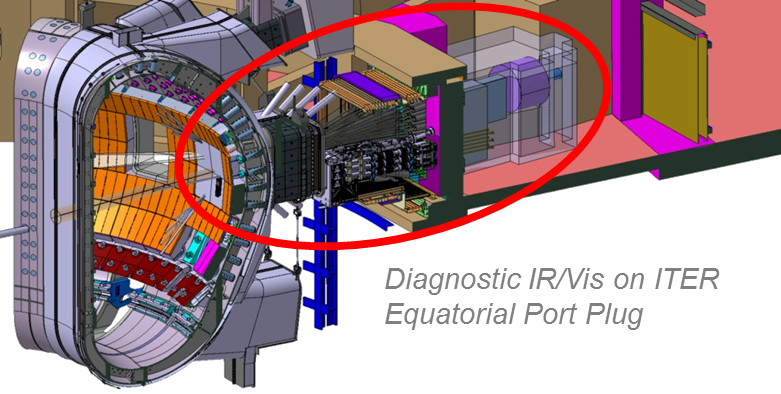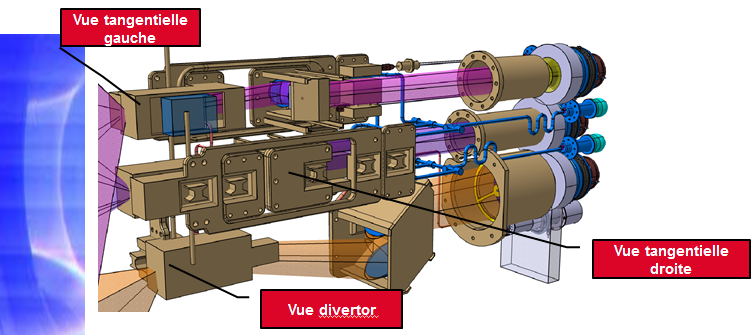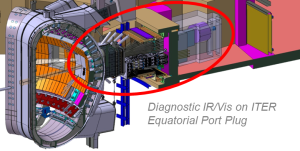The equatorial visible/infrared Wide Angle Viewing System (WAVS) is developped by CEA in a consortium with Ciemat (E) and Bertin Technologies (F). The design of port-plug components for this very complex diagnostic has been promoted by Fusion for Energy as the new reference model of the European Domestic Agency.
CEA, leader of a consortium including CIEMAT and Bertin Technologies is currently developing the port-plug components of the equatorial visible/infra-red wide angle system, a key diagnostic for the ITER machine protection.
The equatorial visible/infrared Wide Angle Viewing System (WAVS) is one of the key diagnostic in ITER devoted to machine protection, plasma control and physics analysis. This will be achieved through infrared (IR) thermography (3-5µm range) and visible observation (600-700nm range) of the main plasma facing components. The objective is to survey at least 80% of the overall area of the vacuum vessel. To this end, 15 lines of sight installed in four equatorial ports (no. 3, 9, 12 and 17) are foreseen allowing for the monitoring of the surface temperature of the main in-vessel components and imaging the edge plasma emission in the visible range.
After a conceptual design phase led by ITER Organization, the design is being further developed through a Framework Partnership Agreement signed between the European Domestic Agency, Fusion for Energy, and a consortium gathering CEA, CIEMAT and Bertin Technologies company.

The WAVS diagnostic of the equatorial port plug 12 is the only one that has to be available for the ITER first plasma planned in December 2025. The port-plug components of the WAVS system in equatorial port 12 have their design under the CEA responsibility. The design starts with a front optical sub-system, divided into a vertical stack of 3 separate lines of sight, two tangential views and one directed towards the inner divertor target mainly, each collecting light over large field of view to provide adequate wide coverage of the machine torus during operations.
Each line of sight is based on a similar concept. For the in-vessel part, it is only composed of mirrors to cope with the wide range of wavelengths and to avoid damaging effects of high energy particles on lenses. In more details, the front light collection and focusing system includes a group of 2 mirrors, actively cooled and located at the interface between the Diagnostic First Wall (DFW) and the Diagnostic Shielding Module (DSM).
The design of the port-plug components has now reached a level of maturity sufficient to be uploaded as an official draft in the ITER database. The new design was then promoted by Fusion for Energy as the new model of the European Domestic Agency. The CEA team has achieved a significant step forward since the design stands now for the new European baseline.



